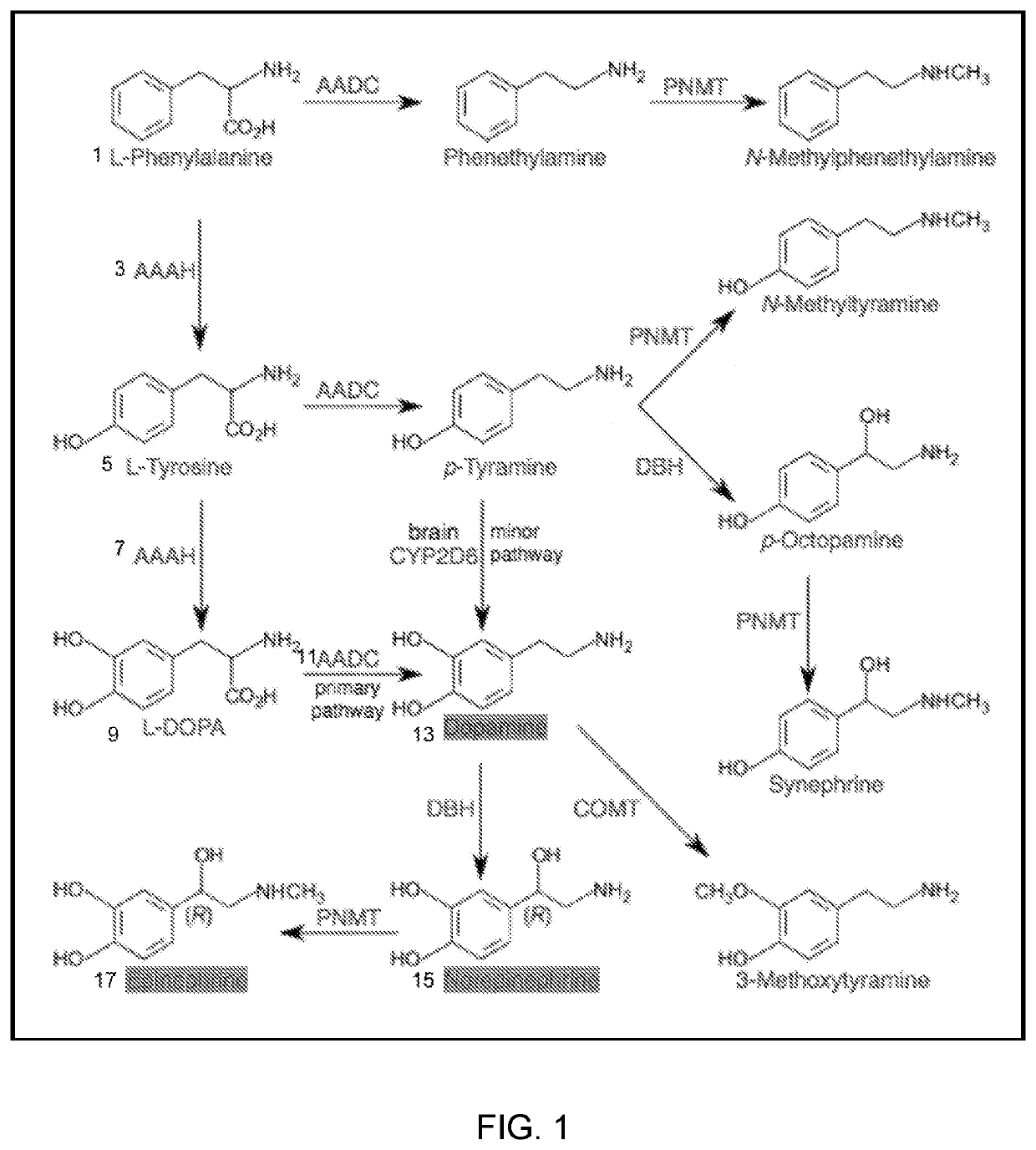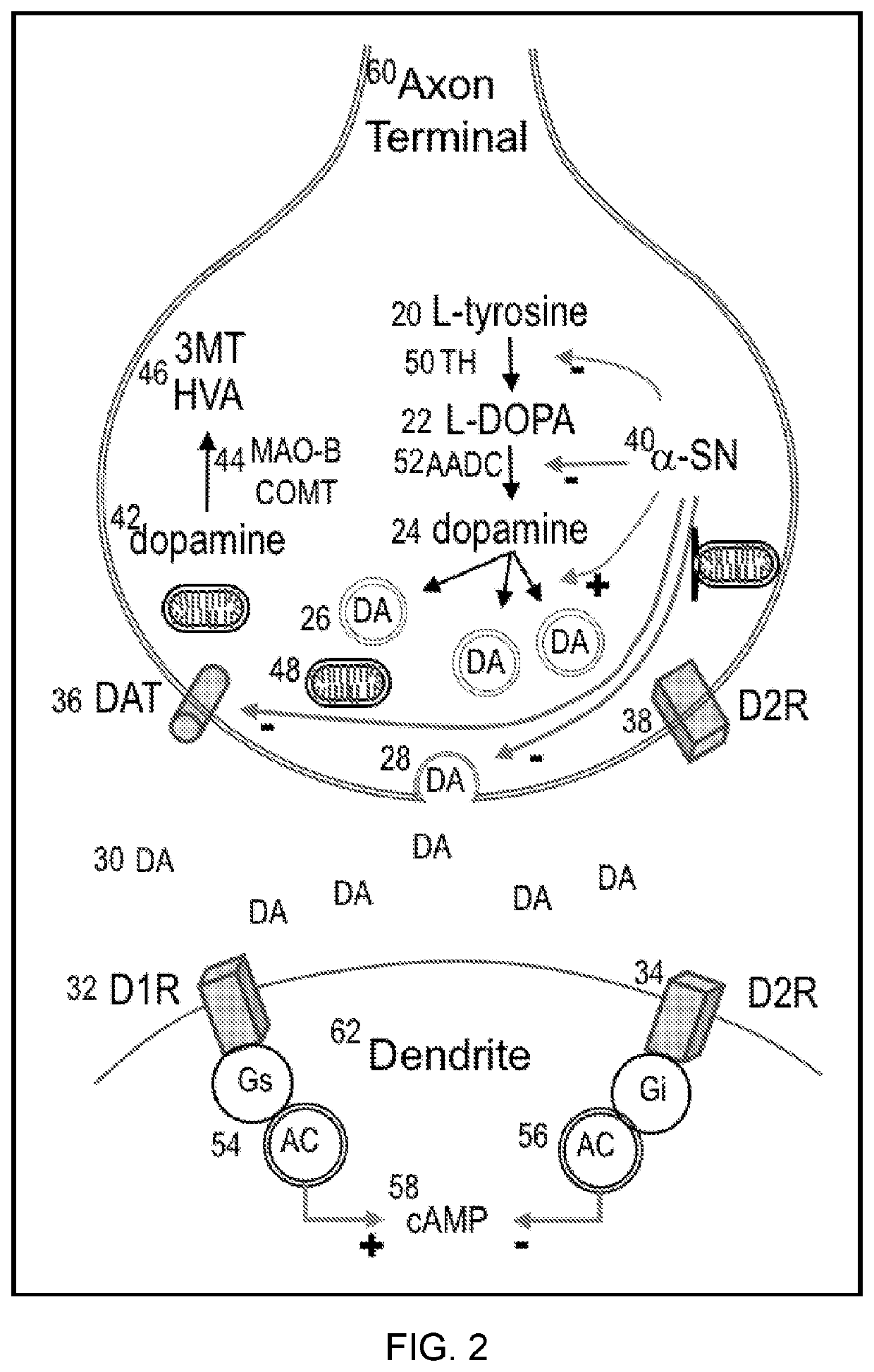Methods for Dopamine Modulation in Human Neurologic Diseases
- Summary
- Abstract
- Description
- Claims
- Application Information
AI Technical Summary
Benefits of technology
Problems solved by technology
Method used
Image
Examples
Embodiment Construction
[0031]A biochemical hallmark of Parkinson's disease is loss of dopamine in the basal ganglia, particularly with loss of the dopaminergic neuronal cell bodies in the substantia nigra pars compacta (SNpc) (Damier, P. et al., The substantia nigra of the human brain: II. Patterns of loss of dopamine-containing neurons in Parkinson's disease, Brain 122, 1437-1448 (1999), Hirsch, E. et al., Melanized dopaminergic neurons are differentially susceptible to degeneration in Parkinson's disease, Nature 334, 345-348 (1988), incorporated herein by reference in their entirety). While symptomatic benefit results from administration of dopamine and dopaminergic therapies, such approaches do not appear to change the course of disease (The Parkinson Study Group, Levodopa and the Progression of Parkinson's Disease, N. Engl. J. Med. 351, 2498-2508 (2004), incorporated herein by reference in its entirety). As depicted in FIG. 2, dopaminergic neurotransmission from pre- to post-synaptic terminal is contr...
PUM
| Property | Measurement | Unit |
|---|---|---|
| Mass | aaaaa | aaaaa |
| Mass | aaaaa | aaaaa |
| Mass | aaaaa | aaaaa |
Abstract
Description
Claims
Application Information
 Login to View More
Login to View More - R&D
- Intellectual Property
- Life Sciences
- Materials
- Tech Scout
- Unparalleled Data Quality
- Higher Quality Content
- 60% Fewer Hallucinations
Browse by: Latest US Patents, China's latest patents, Technical Efficacy Thesaurus, Application Domain, Technology Topic, Popular Technical Reports.
© 2025 PatSnap. All rights reserved.Legal|Privacy policy|Modern Slavery Act Transparency Statement|Sitemap|About US| Contact US: help@patsnap.com



